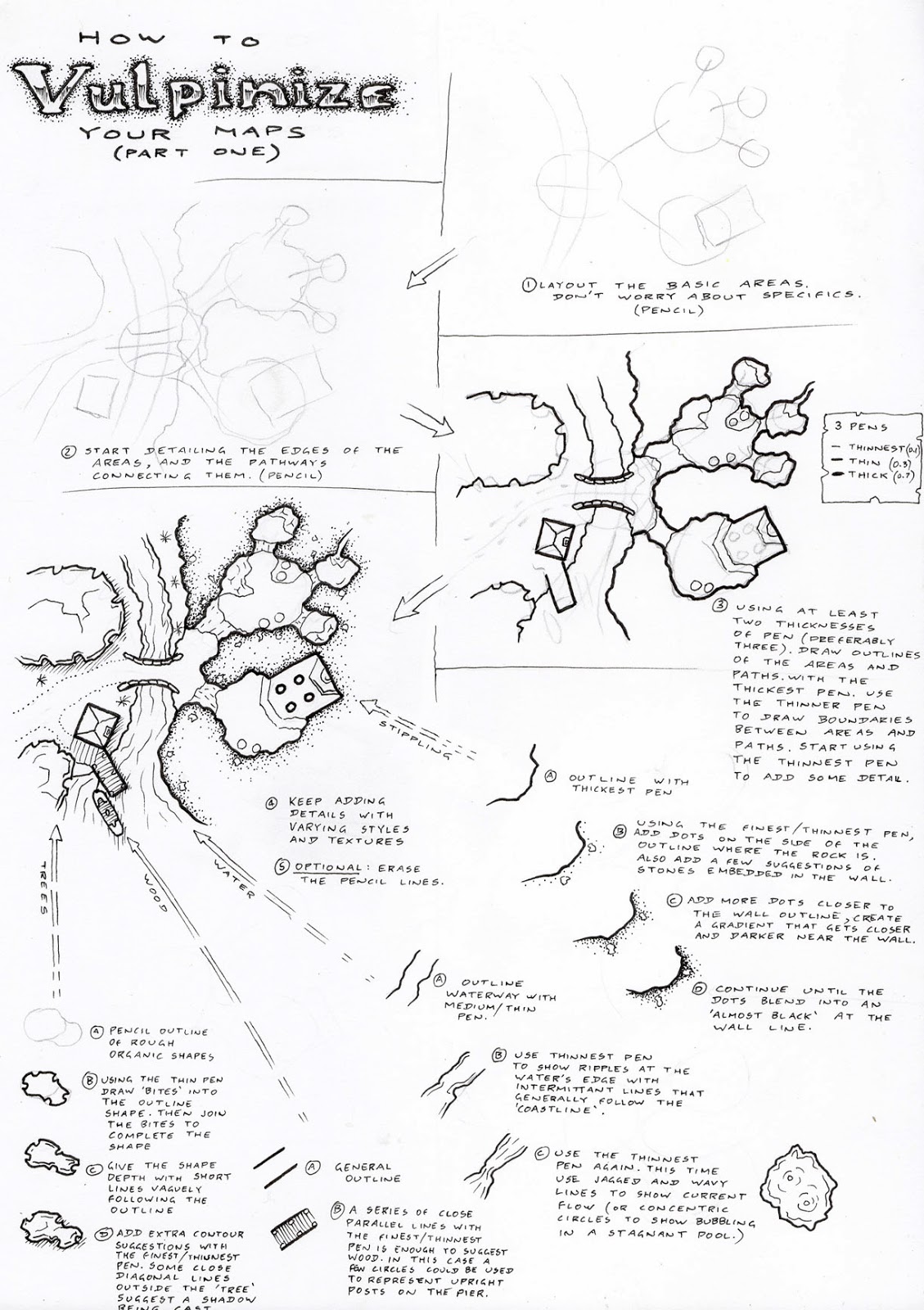A Guide to Geomorphs (Part 8)
Geomorphs have a great deal of versatility.
Many of the depictions so far have been urban or above ground, but don't let that be a limitation. They can just as easily depict underground caverns and dungeon complexes.
Many of the depictions so far have been urban or above ground, but don't let that be a limitation. They can just as easily depict underground caverns and dungeon complexes.
This particular example is a three-phase system. The edge types are "rock", "passageway" and "opening". You could easily get away with developing an underground geomorph system by using only a two-phase system with "rock" and "passageway" edge variants, and there would certainly be a wide variety ofoptions possible with such a system, but I've included the "opening" option because it allows for much larger cavern spaces that extend beyond the borders of a single geomorph (this can be seen most clearly in the bottom of the map where three adjacent tiles have "opening" edges connecting them.
This can be seen a bit clearer when a bit of colour and texture is added to the geomorphs.
In theory with this system you could also develop geomorphs where all six edges are "rock" to designate areas of solid stone without any passages for explorers to pass through, and conversely, you could develop geomorphs where all six edges are "openings" to create much larger cavern spaces.
You may also note with the "cavern" at the bottom, that I've shaded the corners where these three geomorphs meet up. I've done this because you can't be certain whether an "opening" geomorph will contact the edge of a wall (as can be seen in the three border points around this central cavern point), or whether it will simply meet open space. For the purposes of versatility, shading each corner is more useful.
You can also have fun within the confines of a single geomorph. Consider the geomorph at the bottom left, which has two passageways and an opening, but all three don't necessarily meet up in a continuous path.
.png)
.png)

.png)

Comments